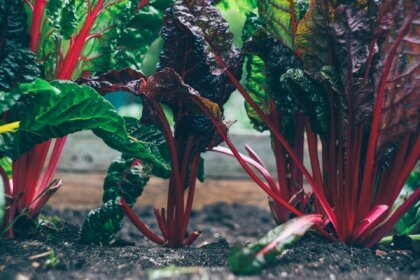Growing Food at Home: How to Design Your Food Production Garden
 Covid-19 has led to an unprecedented spike in popularity for growing your very own veggie garden. It makes total sense. At the start of lockdown, people struggled to find certain foods in grocery stores. Much was sold out, many were hoarding, and certain imports ground to a halt. Gardening is also well-known for its mental health benefits, which mid-pandemic, can be a very helpful plus point!
Covid-19 has led to an unprecedented spike in popularity for growing your very own veggie garden. It makes total sense. At the start of lockdown, people struggled to find certain foods in grocery stores. Much was sold out, many were hoarding, and certain imports ground to a halt. Gardening is also well-known for its mental health benefits, which mid-pandemic, can be a very helpful plus point!
And while many thrived, a good chunk of people were stuck. How do you even get started with a little food production garden? No stress, this wee guide will help you design a garden that will grow foods that would look right at home at a farmers’ market!
Plan It!
Many would-be gardeners haphazardly plant without thinking things through. If you’re looking for a recipe for disaster, avoid planning. If you want to have a garden that maximizes its potential and is a joy to work with, plan it out.
For example, to achieve planning efficiency, we recommend mapping your garden. It may seem a little OTT, but creating a digital (or even drawn) map of your garden will help you allocate space in the best way.
This will also help you get a good idea of the size and dimensions of your garden, where your budding fruits and veggies are best planted, and what you can realistically fit in your new food production haven.
Protection = Key
Protecting your plants is just as important as providing the right nutrients, plenty of sunlight, and water. Consider, the pests that are common to your area. It may even be worth avoiding certain crops if it’ll be too much of a hassle to thwart the annoying little critters!
In addition, think carefully about weather conditions, especially if you’re planning on growing year-round. You don’t want a harsh frost destroying all of your hard work, for example. One potential solution would be investing in a greenhouse; there are a number of options to consider, other than the quintessential ‘gable roof’ style.
Make Space for…You!
It seems super obvious, but many people forget to make space for the actual gardening work. It’s totally understandable; you want to pack as many fruits and veggies in as possible, especially if you’re dealing with a small space.
But trust me, you want plenty of wiggle room, otherwise, you won’t enjoy the actual gardening. You’ll be forced to sit in uncomfortable positions, getting to certain sections may be difficult, and it’s also nice to have a small space set aside for just eating or relaxing.
Get a Full Soil Test
This one comes right out of the book of ‘embarrassing personal mistakes’. When I started my first garden, I overlooked this step, and boy, did it come back to bite me! You want to ensure you get a complete soil test done in your garden, checking for residue of industrial, domestic, or agricultural waste. Even small poisonous particles can be really harmful.
Focus on Soil
Once you’ve completed the soil test, it’s crucial to put even more energy in making sure your soil is up to scratch. Experts will tell you that yields are highly dependent on the quality of the soil.
Having organically rich soil is key to encouraging your plants to grow to their full potential. They’ll develop more extensive roots, will reach water and nutrients far more effectively, and deliver fruits and veggies you can be proud of.
One way of doing this the easy way (or easier, at least!) is to implement a raised garden bed strategy. This can help you 4x your yield, achieve optimal spacing, and it will also save you a bunch of time.
Design with Flexibility in Mind
Whether you’re a gardening newbie or someone who’s used to muddy knees, I recommend designing your garden with a fair amount of flexibility. This allows you to experiment with layouts before you make a 100% commitment. It’ll potentially save you a fair amount of money and effort.
Enjoy the Process
We’ll send you off to gardening bliss with one final piece of advice: enjoy the process. Many beginners (and frankly, many experienced gardeners also!) put far too much pressure to learn everything, get it all right from the get-go, and then get frustrated when mistakes are made.
But that’s all part of the learning curve, what makes gardening enjoyable. You’ll be learning from day 0 until your last gardening stint, so make sure you keep that in mind when things don’t quite go as you expect. It’ll be worth it once your own homegrown veggies are on your plate!



